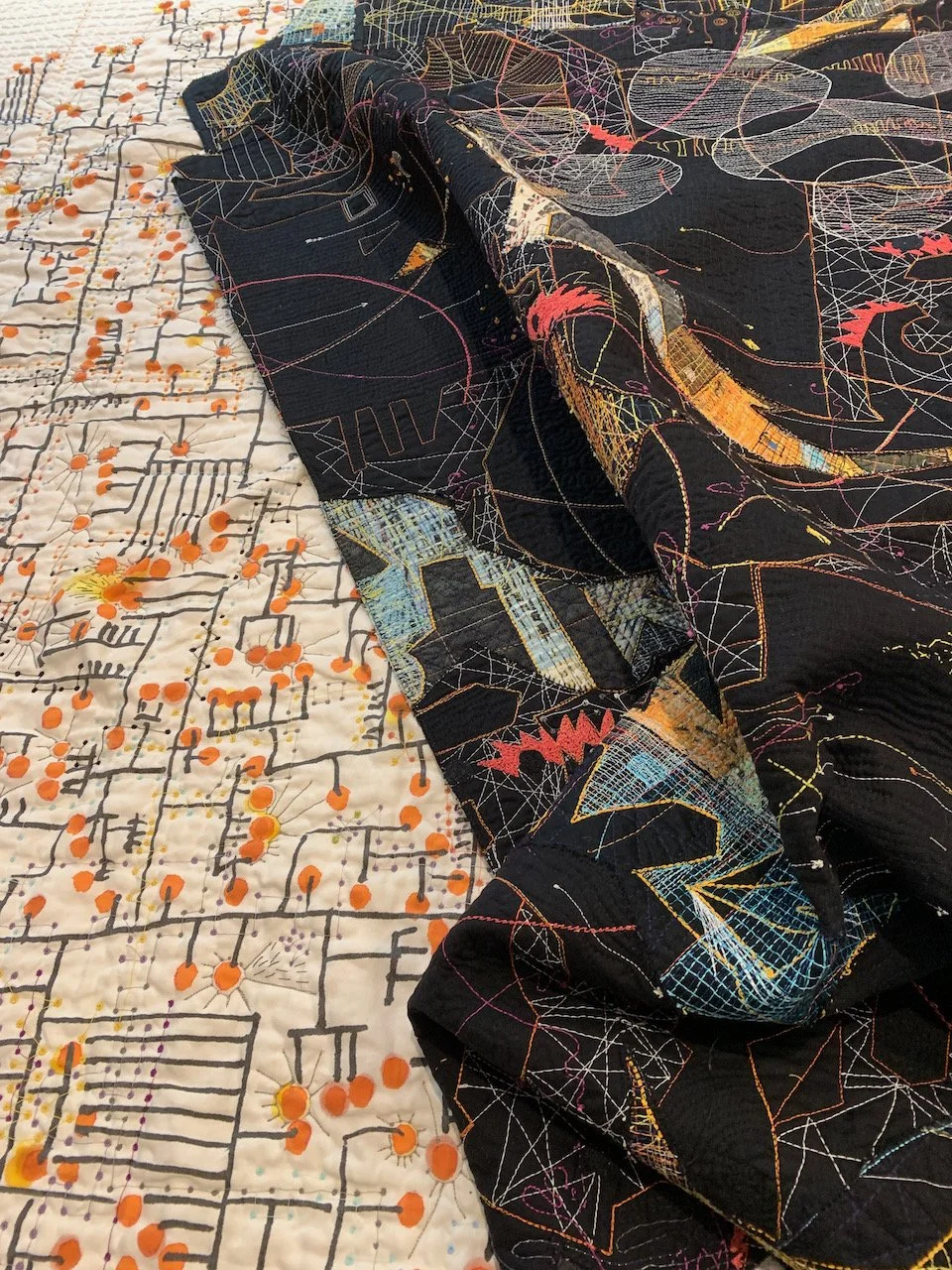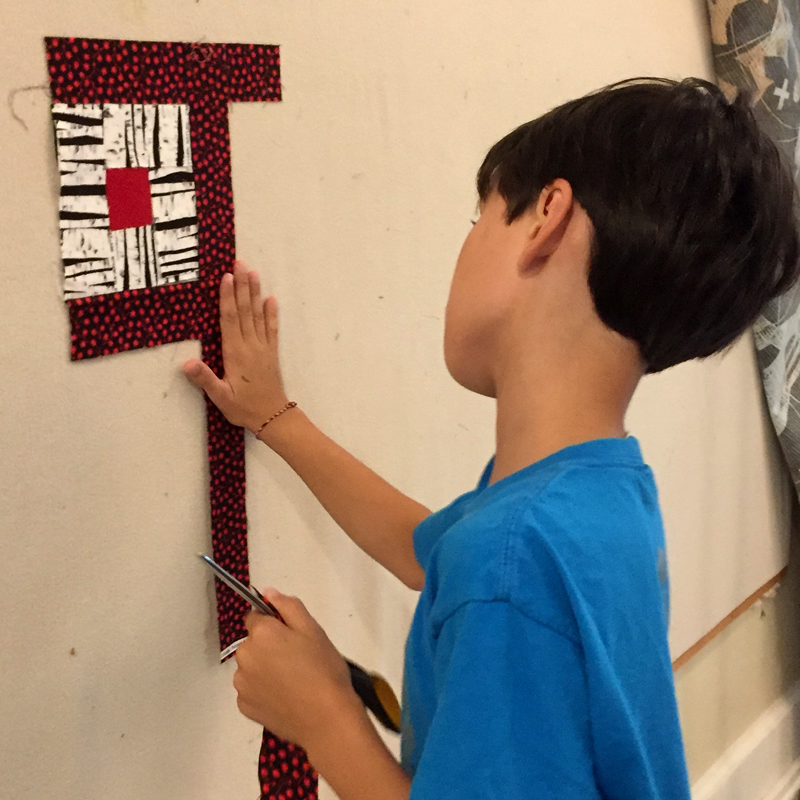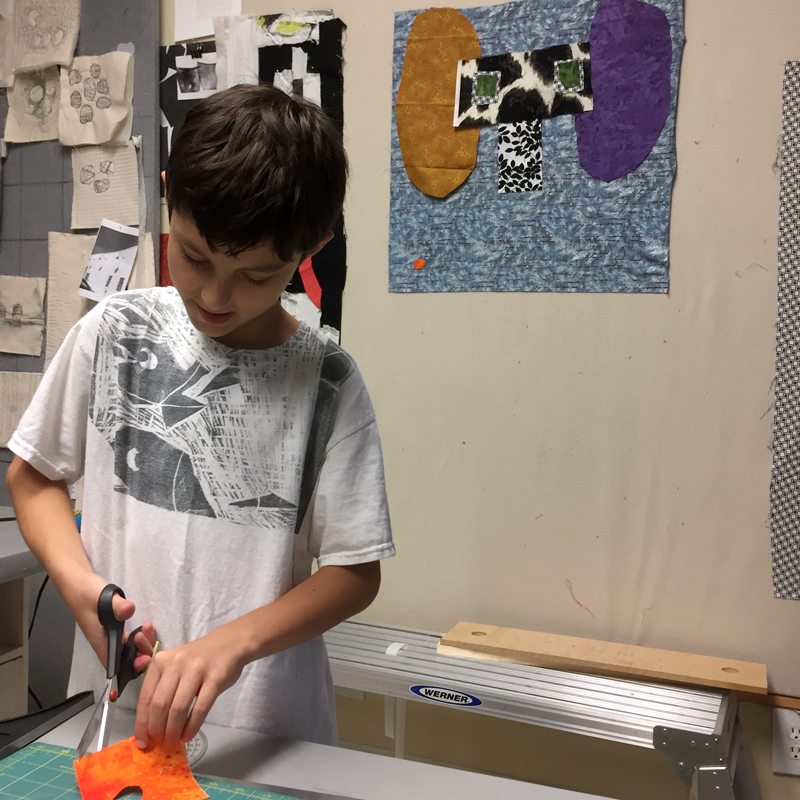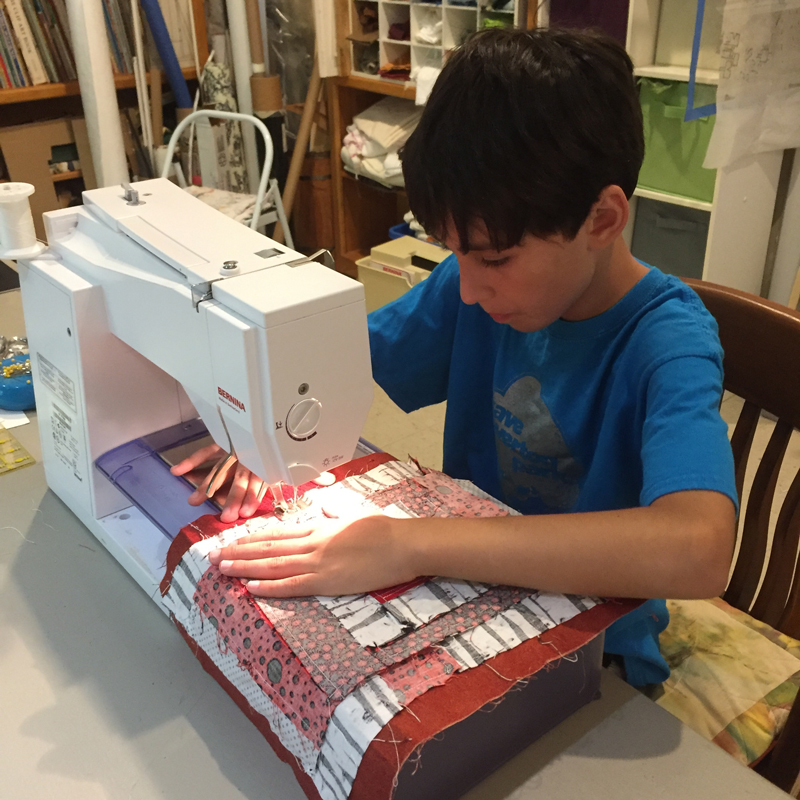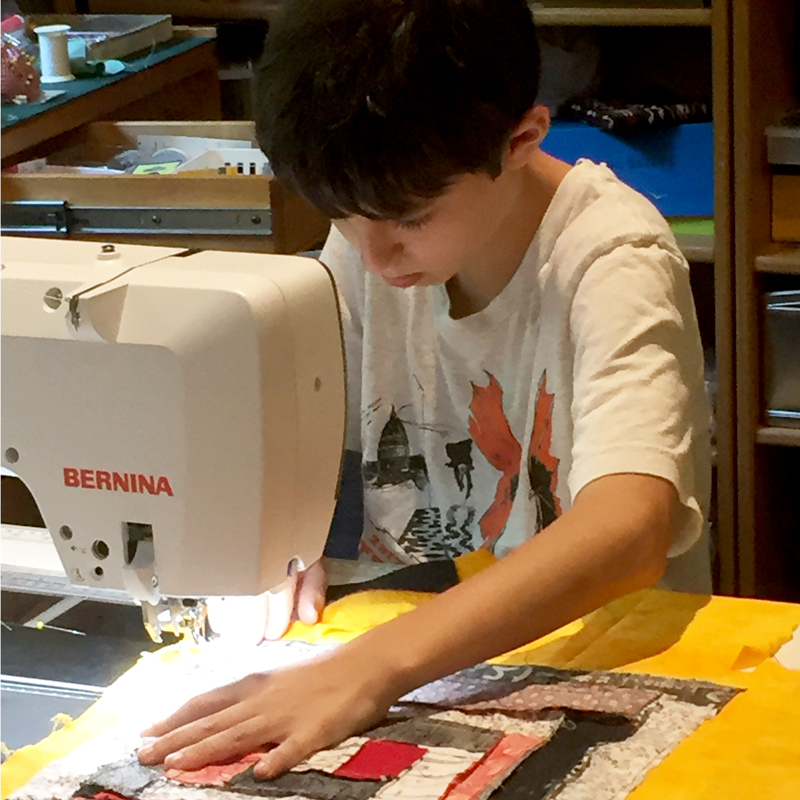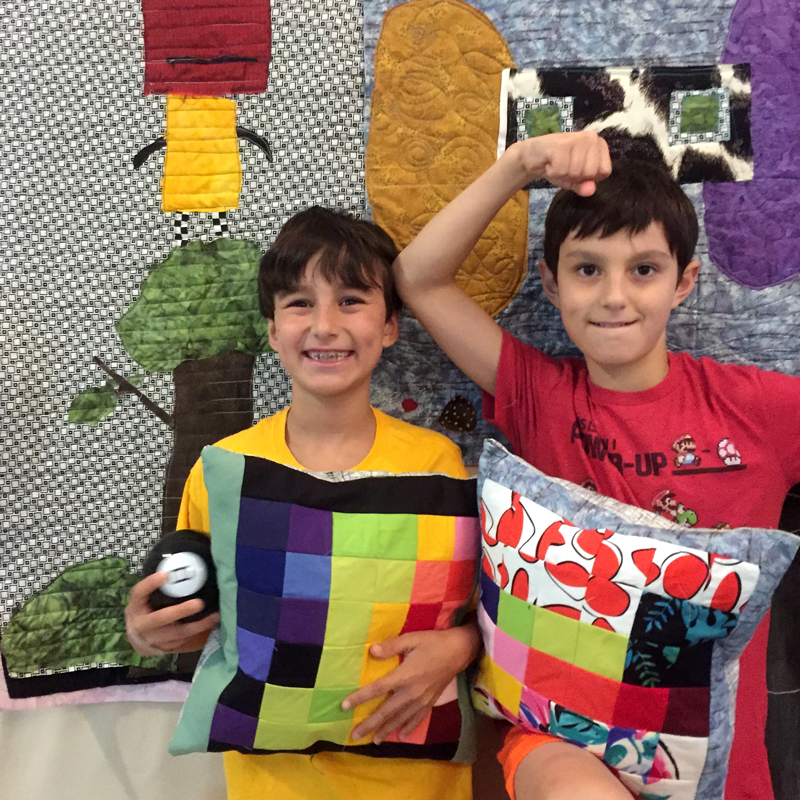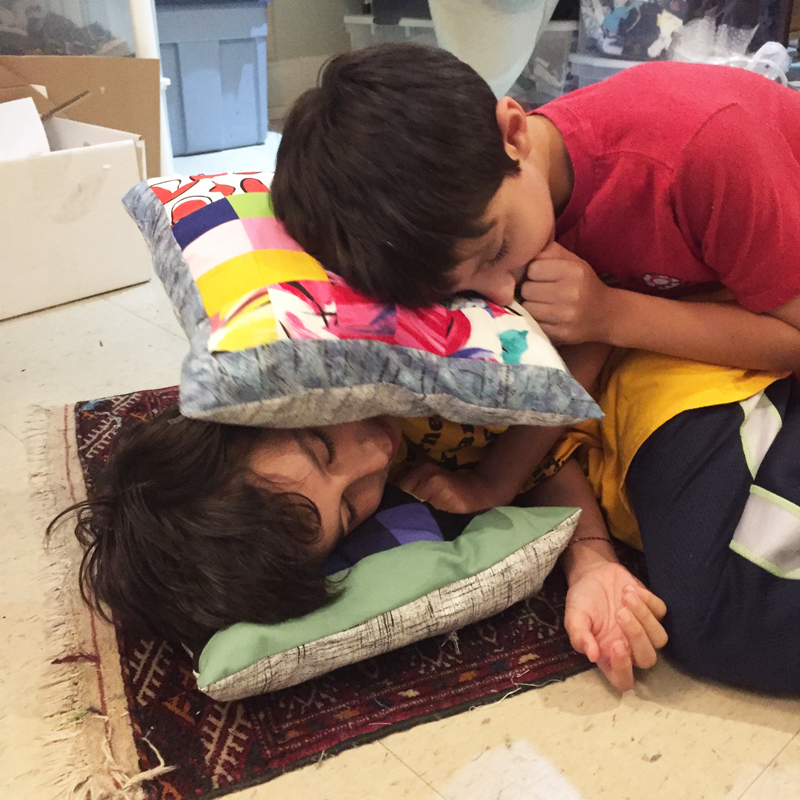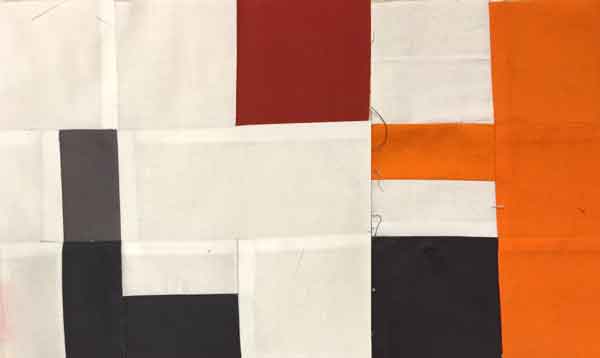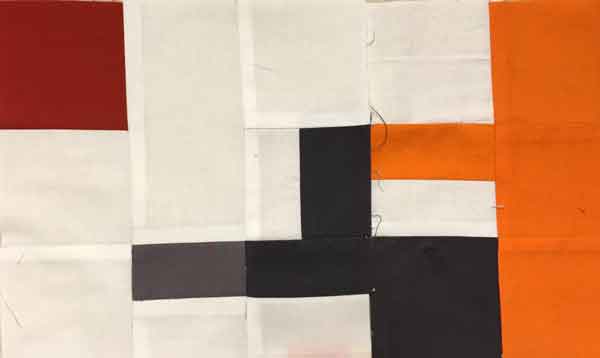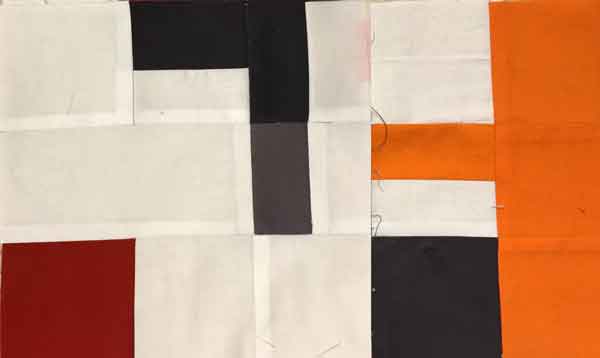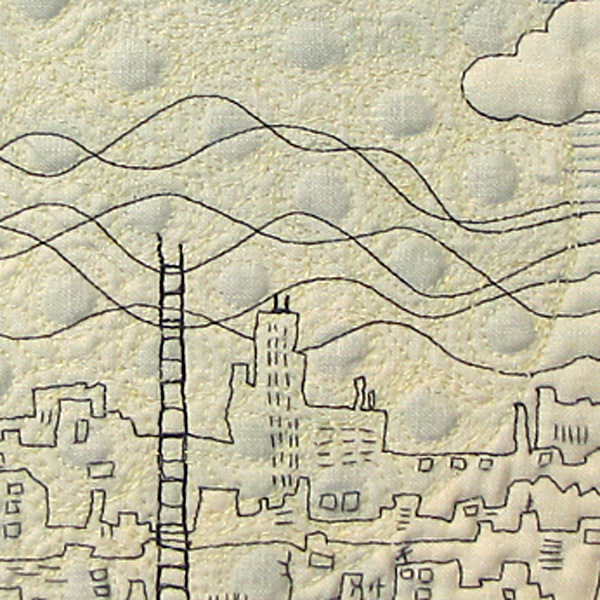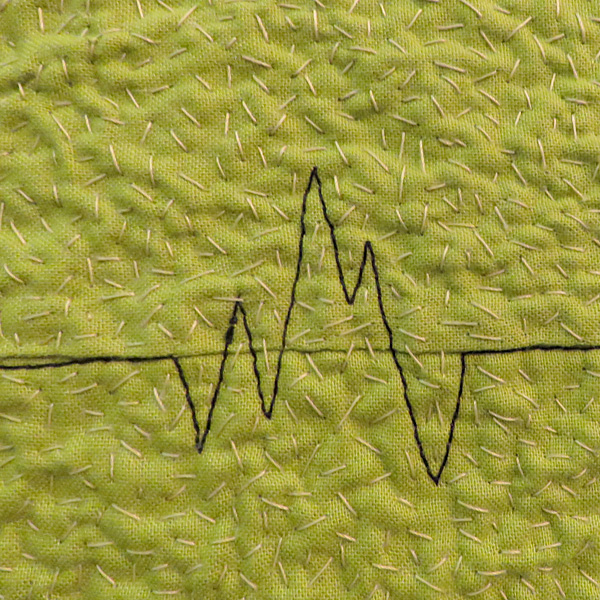Here’s a way to stop the endless news dipping. Turn off the Instagram pages, close your ears to news anchors, take out the sketch book, scribble, then stitch. I had to stop thinking this week. I had to disappear from day in day out headlines and distractions. It started with a What If?
What if I only used straight lines and angular corners when drawing a line that never ended. Fill up the page then turn the page 90 degrees to fill it up again. What would I discover?
Here’s the drawing
Filling in the intersections yields a background foreground pattern.
On to stitching
A square of raw canvas, some wool batting and my trusty black thread started me off. I use YLI 40 wt. cotton thread. It has a deep black color and a strong presence. You can’t miss it when stitching on a light background. It’s all about commitment right?
The nice thing about this exercise is that it stopped me thinking about anything but where the thread wanted to go. I had to anticipate the turns. Here’s the base stitching.
I find that the stiffness of the raw canvas and the loft of the wool batting gives me a surface that has both body and resiliency.
Next step, fill in the blanks. This step was like finding treasure.
Choosing which blank areas would be filled in allowed some shapes to have more definition while others could fade away. Letting the pattern meander across the surface brought some active negative spaces and some interesting positive shapes.
What are you looking at?
Then I started seeing faces. It’s a very common thing with me (see this post for more on that). So I added dots for eyes.
What a powerful thing a dot is.
It looks like some of these guys are asking the same questions I have.
Here’s where it stands now. I may add more shaded areas. I may add more dots. I may cut it up and make something else out of it.
I See Faces, 25” x 28”, Paula Kovarik
Taking a break from thinking made me feel a little more settled this week. I recommend it.


